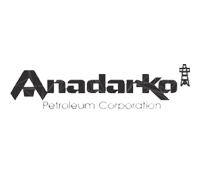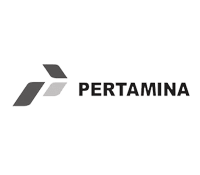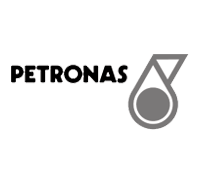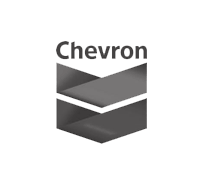Environmental Case Studies
Combining Passive and Active Vapor Sampling to Investigate Vapor Intrusion
A dry cleaner had impacted groundwater and soils with chlorinated solvents. A vapor intrusion (VI) investigation was initiated to determine vapor pathway and potential solvent exposure to occupants of nearby residences, an adult daycare and office buildings. Passive soil gas sampling with the AGI Survey was used to refine and focus subsequent active soil gas and indoor air sampling.
Corroborative Data Reduces Well Installations
Property owners were facing the hefty cost of installing 33 monitoring wells. The AGI Survey provided a more accurate delineation of site-related contamination. The number of wells was reduced, lowering associated costs significantly over the life of the monitoring program.
Delineating Bedrock Fractures for Optimized Well Placement
To optimize a pump and treat remediation system, the property owner wanted to install a down-gradient recovery well within a high flow bedrock fracture. A high resolution AGI Survey was utilized to map a soil gas plume, indicating the presence of a bedrock fracture. A new recovery well was installed and TCE removal increased by 70%.
Dry Cleaner Investigation Reveals Unknown Source
The AGI Survey delineated a suspected solvent source accurately at a dry cleaning facility in the southwestern US. The survey also identified a major source of TCE from a previously unknown, abandoned septic tank, located beneath the adjacent parking lot.
Extent of Dry Cleaner Contamination Determined Using Grid Sampling
The Danish regulatory agency identified the AGI Survey as the proper soil gas sampling tool in soils with low permeability and elevated soil moisture conditions, where pore air cannot be measured accurately using active soil gas sampling methods. Regular grid sampling delineated the extent of solvent impact by dry cleaning fluids in the soil and groundwater.
Large Scale Site Assessment – Pinpointing Problem Equals ROI
Following a site assessment by soil sampling, an aggressive and expensive pump and treat program was implemented to treat 40 billion gallons of contaminated groundwater. After several years of treatment, the plume remained stable suggesting that significant sources had not been identified accurately in the initial site assessment. Due to difficult site conditions and the costs and variability associated with active soil gas sampling, a large AGI Survey was implemented in a tiered sampling program. The survey identified a major source not previously located – a buried oil/water separator containing chlorinated solvents.
Passive Soil Gas Sampling Locates Contaminant Source
After several years of conventional soil and groundwater sampling, concern remained regarding the accurate assessment of subsurface contamination at a Brownfields site in New Jersey. The AGI Survey was utilized to assess a portion of the site where TCE was used to decaffeinate coffee. A significant unknown source of TCE was identified. Daughter compounds were also present and supported a natural attenuation remedial program. The source and spatial distribution of the chlorinated compounds were defined, and were consistent with the direction and flow of groundwater.
Selecting a Cost-Effective Site Assessment Tool
A chemical distribution facility under RCRA Facility Investigation (RFI) noted that chlorinated solvent contamination was migrating to an adjacent property. After considering several site assessment alternatives, the site owner selected the AGI Survey, which accurately delineated the off-site migration in a cost-effective and efficient manner.
Site Characterization of a Vehicle Maintenance Garage
A residential area was impacted by fuel-related compounds from a nearby vehicle repair garage. The AGI Survey was used to delineate the extent of gasoline impact related to the USTs. The survey accurately delineated the suspected contamination where known USTs were located. Further, the results revealed the location of an unknown, abandoned UST. Monitoring well placement was optimized.
AGI Survey Outperforms Active Soil Gas Sampling
Existing groundwater data showed areas of a site that had been impacted with compounds indicative of gasoline (BTEX), as well as a mix of polyaromatic hydrocarbons (PAHs). The AGI Survey was conducted to determine the subsurface migration of these compounds downgradient from a fuel loading rack at a bulk fuel storage terminal. An active soil gas survey was completed prior to the AGI Survey. Soil porosity and high soil moisture adversely impacted the active soil gas survey.
Vapor Intrusion Investigation – Post Explosion
The AGI Survey successfully delineated the extent of propane and mercaptin breakdown compounds (organosulfurs) in soils, three months after an explosion at a light manufacturing facility in the mid-Atlantic US. Propane from a leaking buried pipeline likely migrated beneath the building slab during a heavy rain event. The survey results focused the soil remediation effort significantly.
Long-term Monitoring for Reduced Liability in Property Transfer
A residential area was impacted by fuel-related compounds from a nearby vehicle repair garage. The AGI Survey was used to delineate the extent of gasoline impact related to the USTs. The survey accurately delineated the suspected contamination where known USTs were located. Further, the results revealed the location of an unknown, abandoned UST. Monitoring well placement was optimized.
Detecting SVOCs and PAHs at a Manufactured Gas Plant in New Jersey
This survey was conducted to demonstrate the applicability of a AGI Survey in delineating the subsurface distribution of low volatility, high molecular weight organic compounds. The survey successfully reported PAHs in soil gas and from the Samplers placed directly in the groundwater in monitoring wells. Correlation between existing soil and groundwater data from the manufacture gas plant site with the AGI Survey results, was excellent.
Passive Soil Gas Sampling Outperforms Active Sampling at a Kansas Dry Cleaner Site
Based on unsatisfactory results derived from active soil gas sampling at other similar dry cleaner sites, the Kansas regulator selected the AGI Survey to delineate subsurface impact by dry cleaning solvents. Ease of installation allowed for the deployment of the AGI Passive Samplers through the building slab, adjacent paved parking lot, and along sewer lines. The soil gas results located source and extent of impact, and aided the Kansas DHE in optimizing chemical injection and vapor extraction locations.
Monitoring an Active Remediation Using an AGI Survey
Initial groundwater data at a former petroleum refining and storage facility indicated impact to the groundwater was significant. An AGI Survey was implemented originally to delineate the extent of the subsurface impact. Periodically, an AGI Survey was conducted and revealed the reduction in spatial extent of the subsurface impact as a result of the active, ongoing remediation.
Minimally Invasive Well Monitoring
A monitoring well network on site indicated free product under the current gas station and dissolved gasoline-range compounds elsewhere. The AGI Survey was conducted to demonstrate its non-invasive utility to screen for fuel-related compounds at an active gas station, and further delineate the source and extent of the subsurface contamination identified previously with the groundwater data.





















